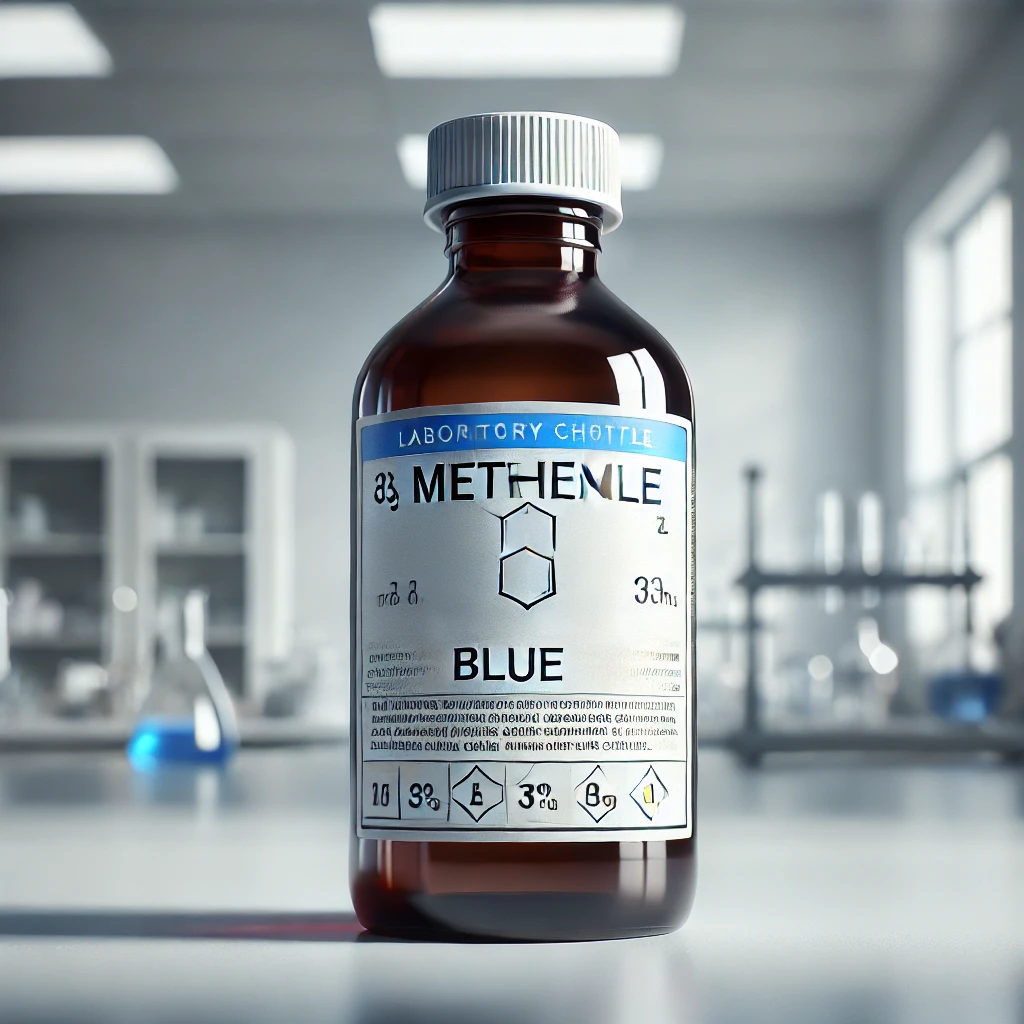What Is Methylene Blue? The Mitochondrial Molecule with Big Potential

Heard About Methylene Blue? Here's What You Should Know
Once known primarily as a textile dye and malaria treatment, methylene blue is now making headlines in the world of functional medicine, neuroscience, and mitochondrial health.
But what exactly is methylene blue—and why are biohackers, doctors, and longevity enthusiasts so excited about it?
This powerful molecule has shown remarkable potential in supporting brain health, energy production, memory, and even mood. From boosting mitochondrial function to acting as a neuroprotective agent, methylene blue is one of the most fascinating compounds you’ve probably never heard of—or are just now hearing more about.
In this blog, we’ll break down what methylene blue is, how it works, what the science says, and whether it might have a place in your functional health toolkit.
What Is Methylene Blue?
Methylene blue (MB) is a synthetic compound first developed in the 1800s as a textile dye. It was one of the first drugs ever used in modern medicine and is still FDA-approved today for treating:
- Methemoglobinemia (a blood disorder)
- Urinary tract infections
- As a surgical dye for diagnostic imaging
More recently, methylene blue has attracted attention for its off-label uses in areas like:
- Cognitive enhancement
- Mitochondrial support
- Neurodegenerative disease research
- Antiviral and antimicrobial defense
In small, controlled doses, methylene blue appears to optimize cellular energy production and protect against oxidative stress.
How Does Methylene Blue Work?
Methylene blue has multiple mechanisms of action—but one of its primary effects is on the mitochondria, the "powerhouses" of your cells.
1. Boosts Mitochondrial Energy (ATP) Production
- Methylene blue acts as an alternative electron carrier in the mitochondrial electron transport chain.
- This helps bypass damaged complexes and improves cellular respiration, allowing for more efficient ATP generation.
Think of it as a mitochondrial "backup generator" that helps your cells make energy more effectively.
2. Supports Brain Function and Memory
- MB crosses the blood-brain barrier and accumulates in brain tissue.
- Studies show it can improve memory retention, focus, and cognitive performance—especially under stress or in aging brains.
- It may also support synaptic density and neuroplasticity.
Low doses of MB are being studied as a potential treatment for Alzheimer’s, Parkinson’s, and other neurodegenerative diseases.
3. Acts as a Powerful Antioxidant
- Methylene blue reduces oxidative stress by scavenging free radicals and improving mitochondrial function.
- It helps regenerate NAD+ and glutathione, which are critical for cellular detox and longevity.
4. Antimicrobial and Antiviral Properties
- MB has been shown to inactivate viruses, bacteria, and fungi, especially when combined with light (photodynamic therapy).
- This makes it useful in certain infections and even explored in antiviral protocols (including for viruses like SARS-CoV-2).
Potential Benefits of Methylene Blue (Low-Dose)
- Increased energy and stamina
- Improved focus, memory, and cognitive function
- Reduced inflammation and oxidative stress
- Antimicrobial and immune-supportive effects
- Mitochondrial repair in neurodegenerative conditions
- Anti-aging and longevity support
Is Methylene Blue Safe?
In low doses, pharmaceutical-grade methylene blue appears to be safe and well-tolerated. However, dose matters.
Safety Notes:
- Safe range: Typically 0.5–2 mg/kg body weight
- Too much MB can be toxic and may cause:
- Nausea
- Dizziness
- Headaches
- Serotonin syndrome (especially if combined with SSRIs or MAOIs)
- Avoid use if you are taking:
- SSRIs, SNRIs, or MAO inhibitors
- Antidepressants that increase serotonin
- Pregnant or breastfeeding unless advised by a provider
Always consult a knowledgeable practitioner before using methylene blue—especially if you are on medications.
What Form Does It Come In?
- Oral liquid drops (most common)
- Capsules
- IV infusions (for clinical or research settings)
- Topical use (for skin or photodynamic therapy)
- Sublingual tablets (for rapid absorption)
Important: Use only USP-grade or pharmaceutical-grade methylene blue for human use. Industrial-grade MB contains heavy metals and is not safe.
Who Might Benefit from Methylene Blue?
- Individuals with chronic fatigue or mitochondrial dysfunction
- Those with brain fog, memory issues, or cognitive decline
- People with neurodegenerative diseases (as part of a medical protocol)
- Biohackers interested in anti-aging and brain optimization
- Patients recovering from viral illness or oxidative stress
- Anyone with low cellular energy and high inflammation
How Long Does It Take to Work?
Some people report increased focus, energy, and mood within hours to days of low-dose use. Others notice more subtle improvements over weeks, particularly with brain function, stamina, or mood.
It may be used cyclically—such as a few times per week—or strategically before high-performance mental or physical tasks.
Final Thoughts: Methylene Blue Is Small but Mighty
Methylene blue may look like just a blue liquid—but its impact on cellular health, brain function, and energy is profound. When used safely and appropriately, this ancient compound holds modern promise for enhancing health, longevity, and mitochondrial performance.
Whether you're looking to boost brain power, recover from fatigue, or explore cutting-edge longevity tools, methylene blue may be worth considering—under the guidance of a qualified provider.
At Sheen Vein & Cosmetics, We Use Functional Tools That Target Energy at the Source
We help patients restore energy, clarity, and cellular health with personalized protocols—sometimes including mitochondrial support tools like methylene blue, red light therapy, and more.
Book a consultation today to explore whether methylene blue may be right for your brain, body, and long-term vitality.